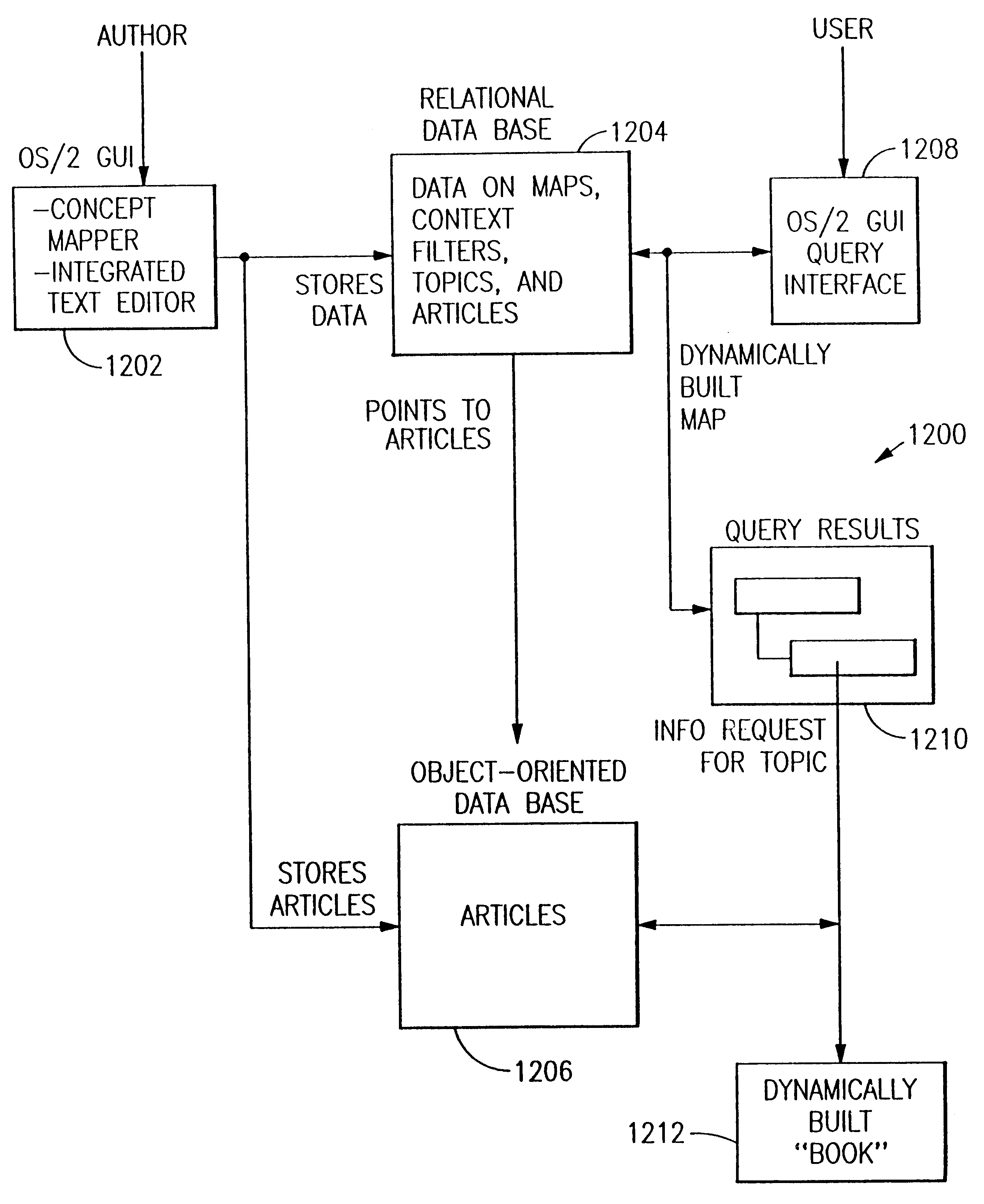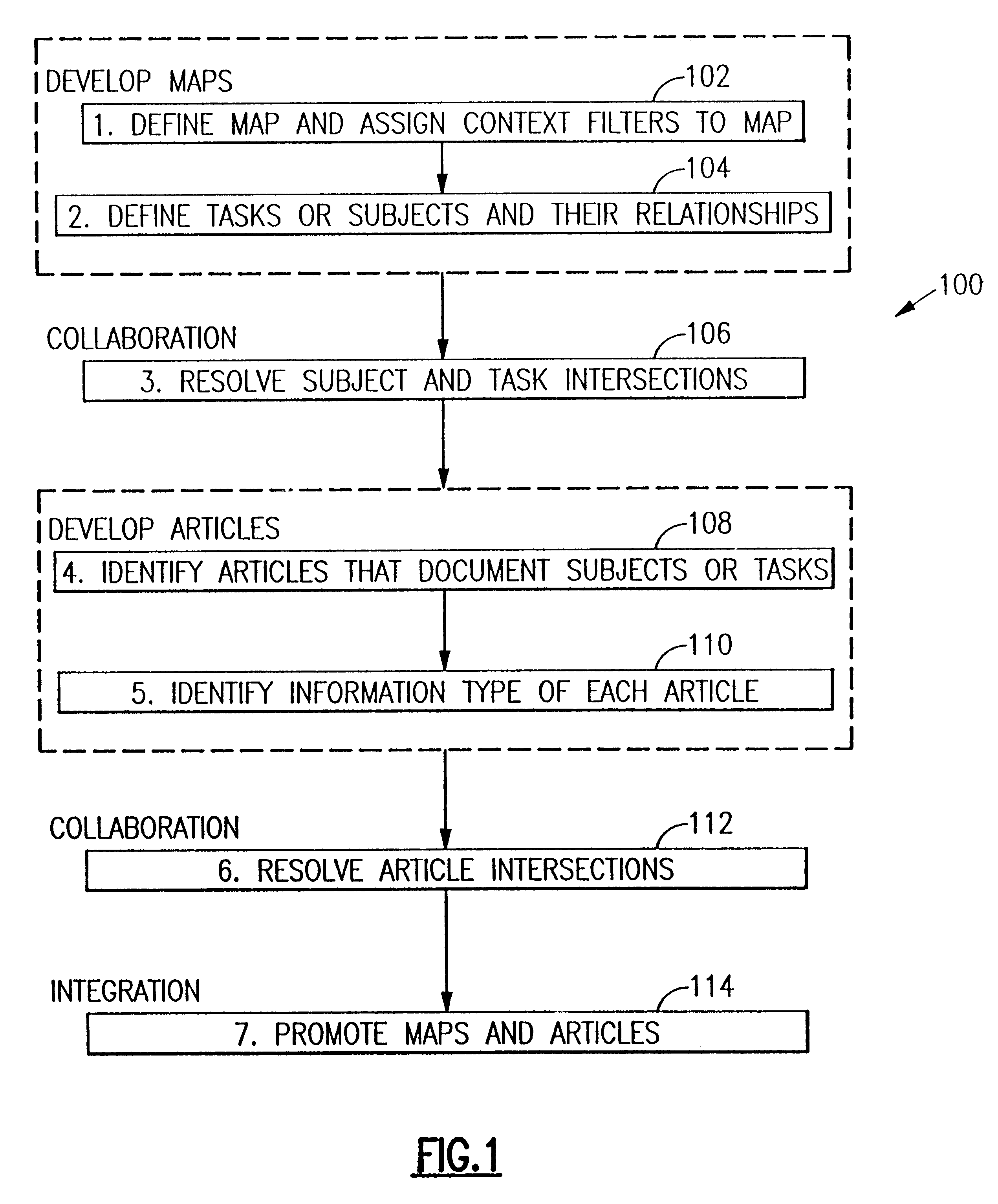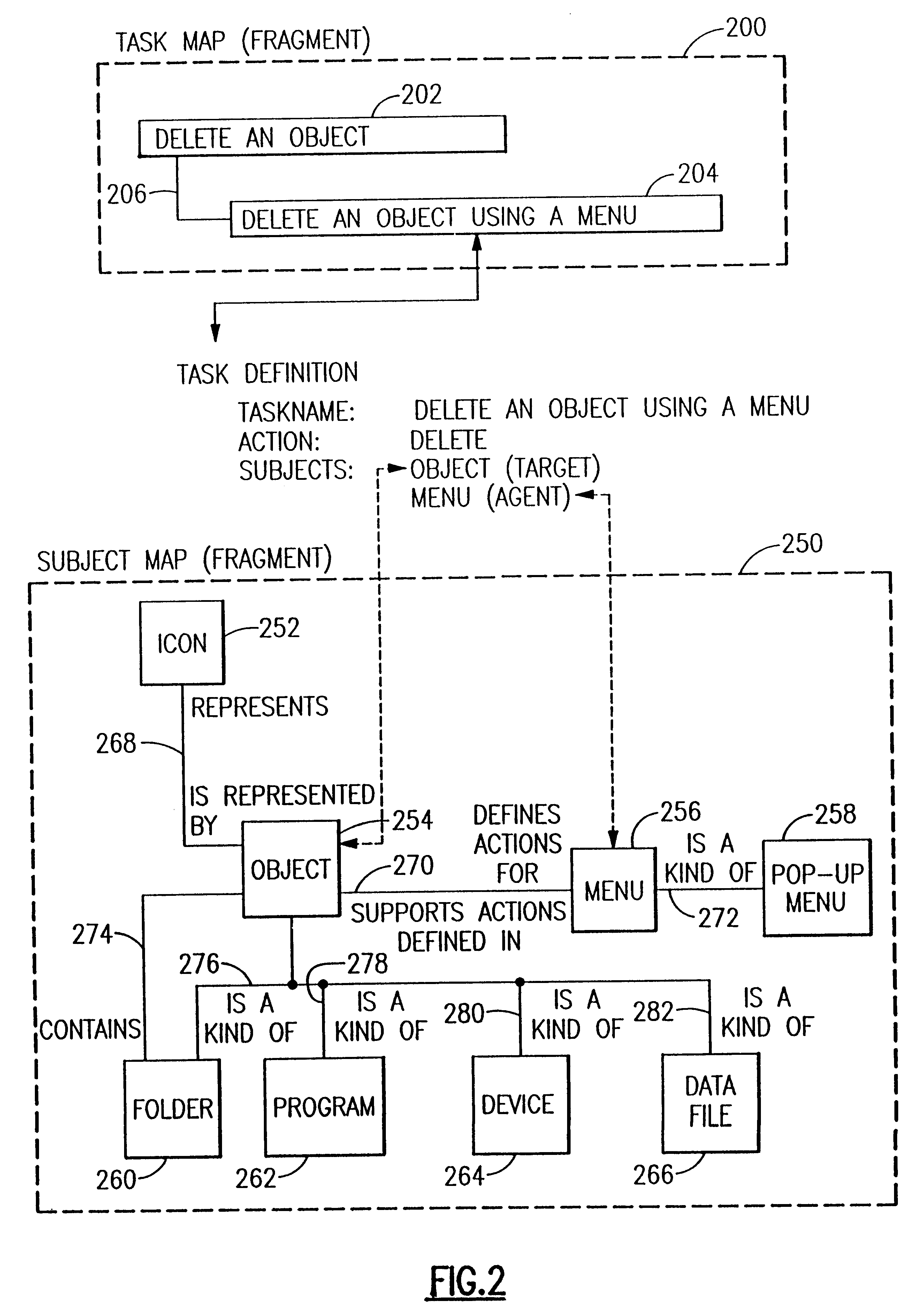Integration of link generation, cross-author user navigation, and reuse identification in authoring process
a reuse identification and authoring technology, applied in the field of authoring systems and processes, can solve the problems of unable to capture important semantic data about the context of two authoring system types, difficult for readers to find information relevant to their needs, and difficulty in retrieving information that fits their needs
- Summary
- Abstract
- Description
- Claims
- Application Information
AI Technical Summary
Benefits of technology
Problems solved by technology
Method used
Image
Examples
first embodiment
FIG. 7 shows the general procedure 700 as implemented in a first authoring system 800 shown in FIG. 8. Preferably, the components of authoring system 800 are implemented as software (i.e., a program of instructions on a machine-readable program storage device) executing on a suitable computer platform (not separately shown).
Authoring system 800 exploits the following existing tools in an existing information development process:
1. IBM.RTM. BookMaster.RTM., a document markup language for text processing.
2. IBM BookManager, a product that builds an electronic book from IBM BookMaster documents (as well as documents in other markup, including html).
3. IBM BookServer, a product that allows BookManager softcopy books to be served to web browsers.
BookManager supports linking within and across documents based on BookMaster tags that define the links. BookMaster tags identify:
1. The source of the link, via the :link. and :elink. tags. The content between the :link. and :elink. tags becomes ...
second embodiment
FIG. 11 outlines the general procedure 100 as performed in a second authoring system 1200 shown in FIG. 12. Preferably, the components of authoring system 1200, like those of authoring system 800, are implemented as software executing on a suitable computer platform.
Implementation of Step 1 (102) in Authoring System 1200:
Authoring system 1200 contemplates a graphical user interface (hereinafter "author interface") 1202 for allowing an author to develop maps directly rather than via markup language as in system 800. Author interface 1202 allows authors to define subject and task maps (FIG. 6). Thus, the author may assign a name to the map in a dialog box and assign context filter values (FIG. 6) to the map by selecting appropriate values from a drop-down list of predefined values for each context filter (step 1102).
The context filter values used in authoring system 1200 may be similar or identical to those used in authoring system 800. Preferably, authoring system 1200 includes the a...
PUM
 Login to View More
Login to View More Abstract
Description
Claims
Application Information
 Login to View More
Login to View More - R&D
- Intellectual Property
- Life Sciences
- Materials
- Tech Scout
- Unparalleled Data Quality
- Higher Quality Content
- 60% Fewer Hallucinations
Browse by: Latest US Patents, China's latest patents, Technical Efficacy Thesaurus, Application Domain, Technology Topic, Popular Technical Reports.
© 2025 PatSnap. All rights reserved.Legal|Privacy policy|Modern Slavery Act Transparency Statement|Sitemap|About US| Contact US: help@patsnap.com



